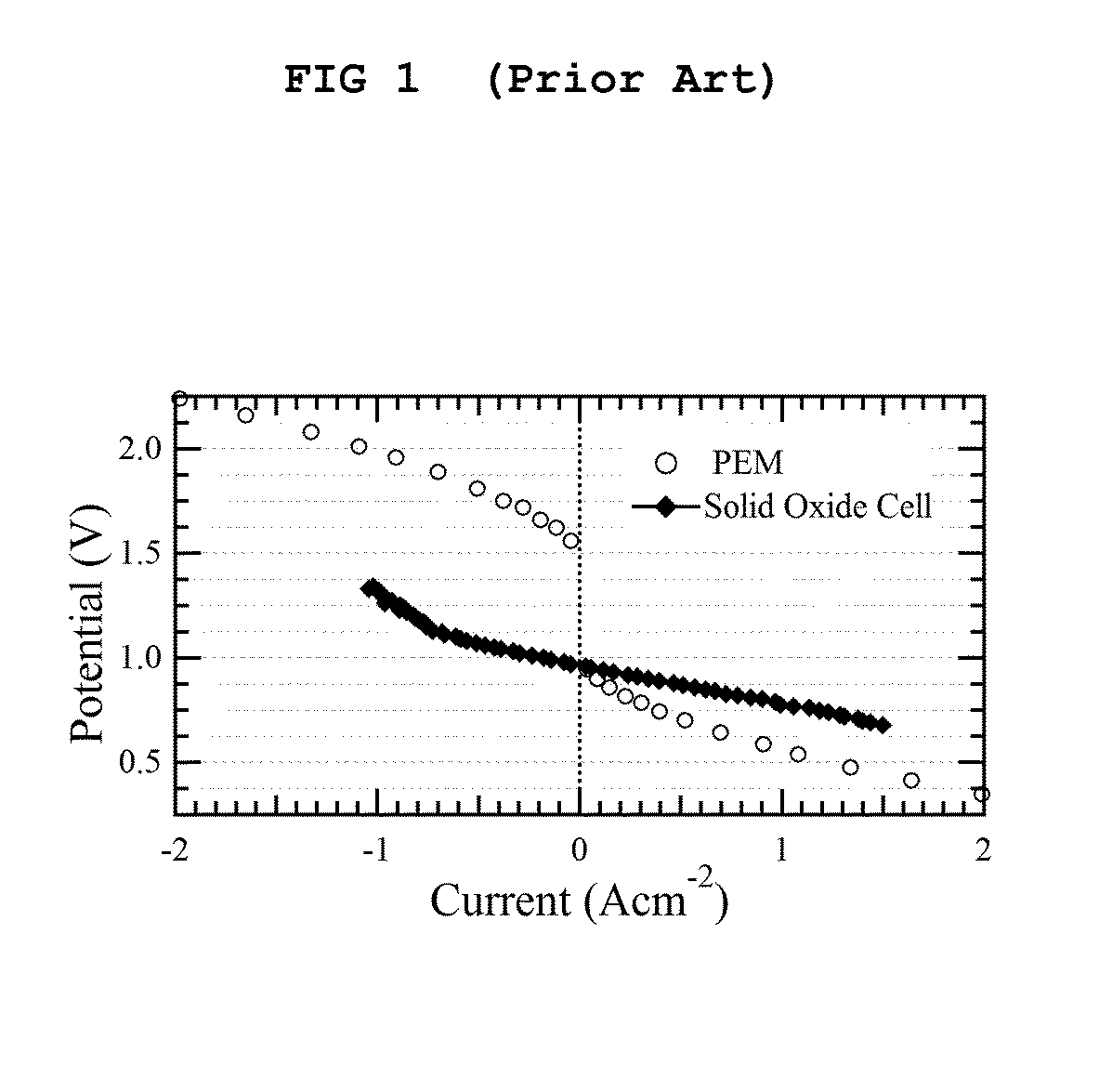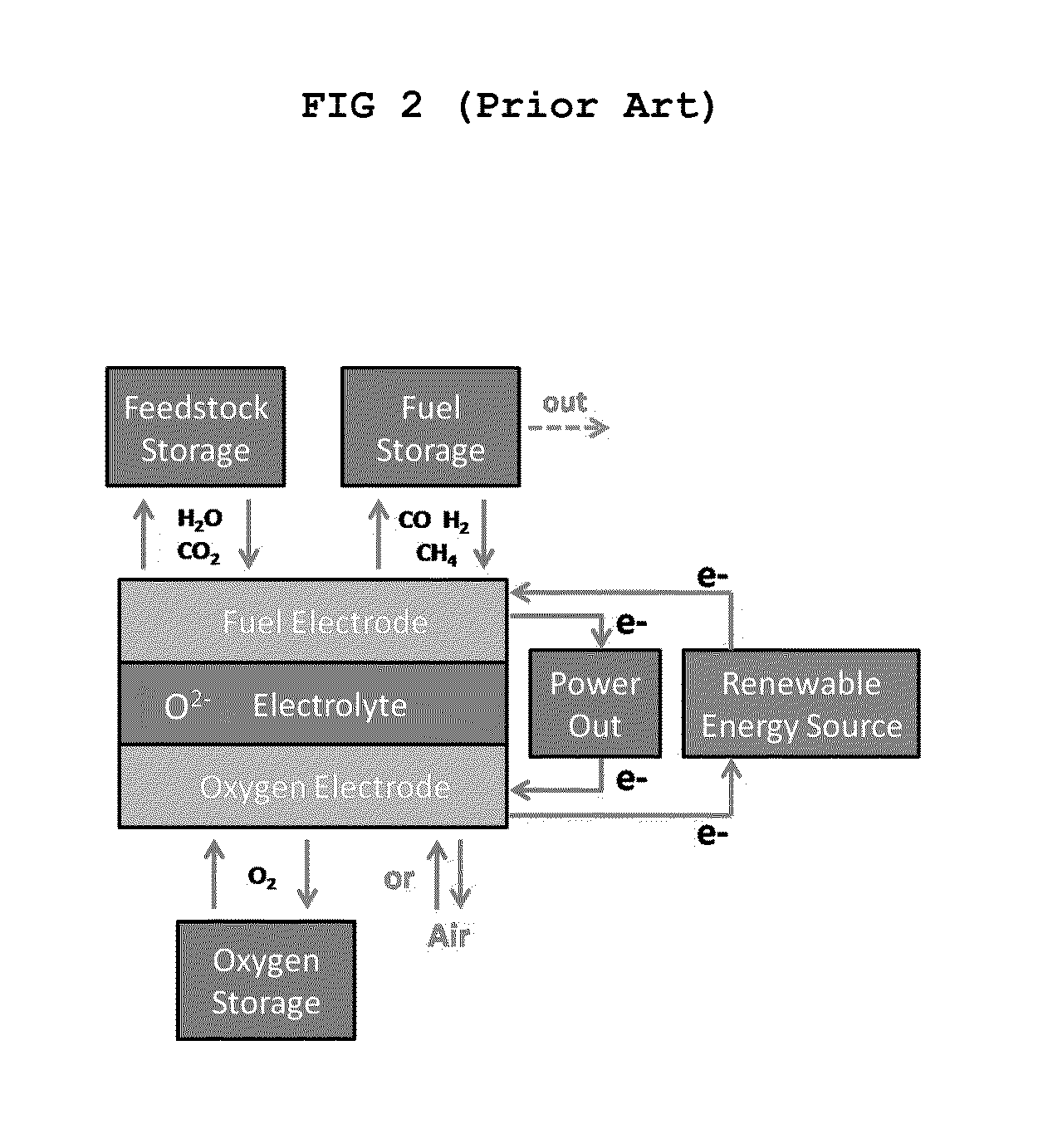Method for improving the efficiency and durability of electrical energy storage using solid oxide electrolysis cell
a solid oxide electrolysis and efficiency improvement technology, applied in the direction of electrolytic organic production, electrochemical generators, instruments, etc., can solve the problems of low round-trip efficiency of reversible fuel cells compared to the above-mentioned technologies, relative lack of viable storage technologies, limited energy storage capacity, etc., and achieve the effect of improving system efficiency
- Summary
- Abstract
- Description
- Claims
- Application Information
AI Technical Summary
Benefits of technology
Problems solved by technology
Method used
Image
Examples
Embodiment Construction
[0055]Illustrating certain non-limiting aspects and embodiments of this invention, a method for electrical energy storage is provided. Also provided is a method for fuel production.
[0056]Specifically, one embodiment of the invention is a method for fuel production comprising operating a solid oxide reversible cell in electrolysis mode while maintaining approximately thermo-neutral conditions at a cell operating potential of from between 1.0-1.3 V to generate a fuel mixture. Another embodiment is a method for electrical energy storage comprising operating a solid oxide reversible cell in electrolysis mode at a thermal-neutral voltage of from between 1.0-1.3 V, at a first operating temperature of 500-850° C., and a first operating pressure of 1-100 atmospheres to generate a fuel mixture comprising at least 10% methane; providing the fuel mixture, and oxygen or air, to the solid oxide reversible cell; and operating the solid oxide reversible cell in fuel cell mode using the provided fu...
PUM
| Property | Measurement | Unit |
|---|---|---|
| Temperature | aaaaa | aaaaa |
| Temperature | aaaaa | aaaaa |
| Temperature | aaaaa | aaaaa |
Abstract
Description
Claims
Application Information
 Login to View More
Login to View More - R&D
- Intellectual Property
- Life Sciences
- Materials
- Tech Scout
- Unparalleled Data Quality
- Higher Quality Content
- 60% Fewer Hallucinations
Browse by: Latest US Patents, China's latest patents, Technical Efficacy Thesaurus, Application Domain, Technology Topic, Popular Technical Reports.
© 2025 PatSnap. All rights reserved.Legal|Privacy policy|Modern Slavery Act Transparency Statement|Sitemap|About US| Contact US: help@patsnap.com



